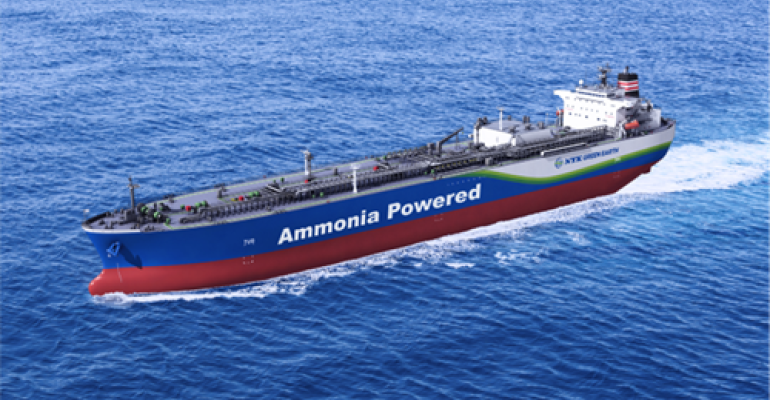The 40,000 cu m ammonia carrier order is due to be delivered in November 2026 by Japan Marine United Corporation’s Ariake Shipyard and will have an ammonia dual-fuel two-stroke engine produced by Japan Engine Corporation. The auxiliary engine will be an ammonia dual-fuel four-stroke engine produced by IHI Power Systems.
Details of the vessel released by NYK show that the main engine will be able to run on a fuel mix up to 95% ammonia, while the ammonia mix in the auxiliary engine will 80% or more, with the remainder of the fuel mix being a pilot fuel oil. The expected fuel mixes will enable greenhouse gas emissions reductions of up to 80%.
The order is the result of a series of contracts between NYK, Japan Engine Corporation, IHI Power Systems, and Nihon Shipyard, companies selected in 2021 by Japan’s New Energy and Industrial Technology Development Organization (NEDO) for its Green Innovation Fund Project.
Along with ClassNK, the companies form a consortium which has been working on creating and commercialising vessels that use Japanese-built ammonia-fuelled engines.
The challenges overcome by the ship design include ammonia’s flame retardancy, negating nitrous oxide emissions and ammonia toxicity. The consortium’s work on ammonia toxicity and ship design fed into the development of ClassNK’s safety guidelines for ammonia-fueled ships.
“After the ship is completed, the consortium will continue to operate the vessel for demonstration purposes to confirm the vessel's performance, including environmental friendliness and the practicality of the operation manual, and to provide user feedback to shipbuilders and marine equipment manufacturers for further improvements. We will strive to build a development cycle as a "first mover" in developing ammonia-fueled vessels,” the group said.
Copyright © 2024. All rights reserved. Seatrade, a trading name of Informa Markets (UK) Limited.
Add Seatrade Maritime News to your Google News feed.  |

